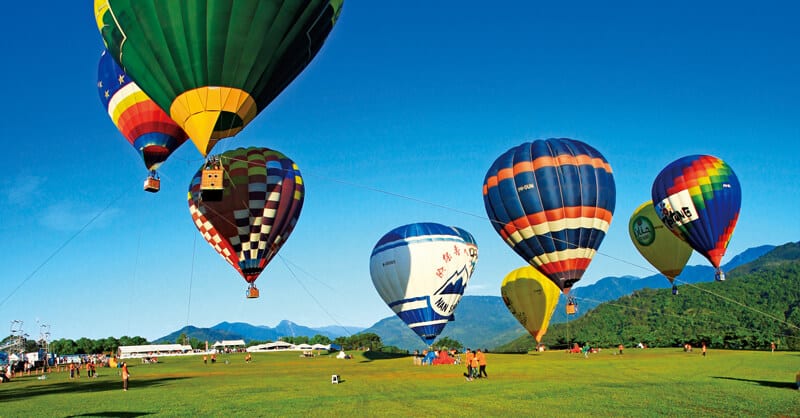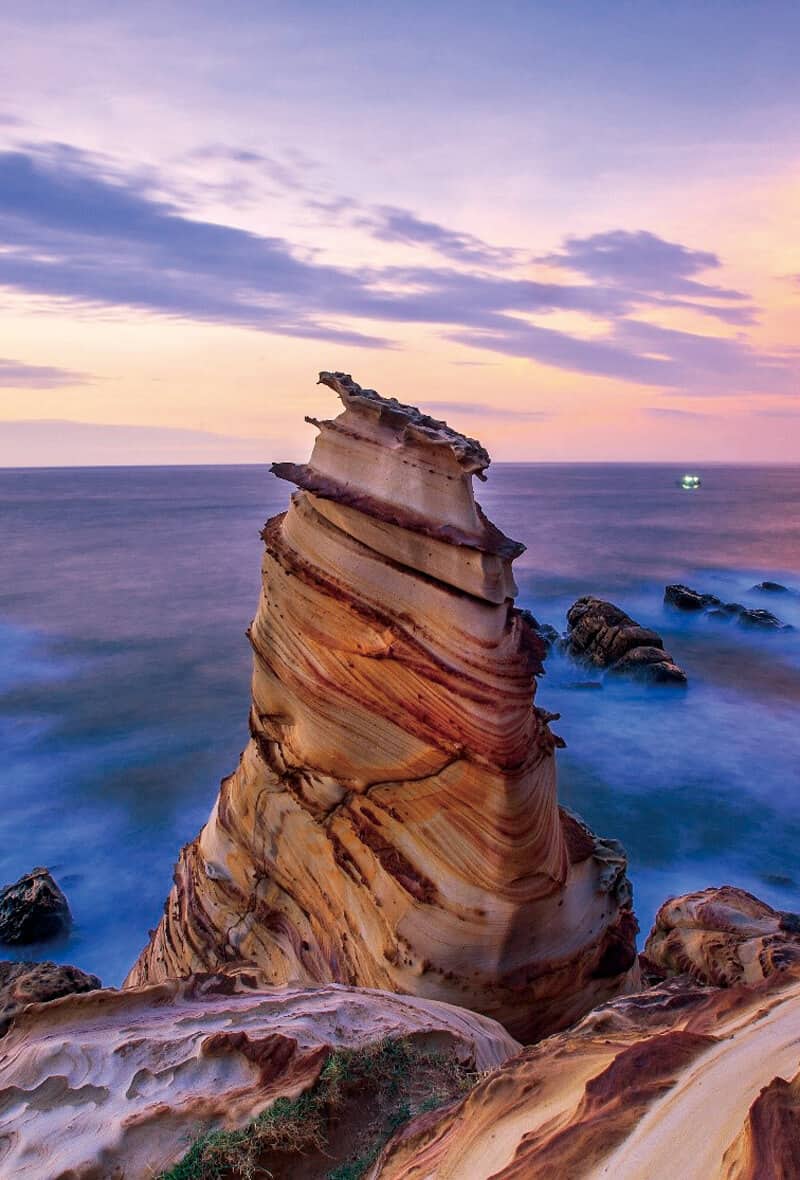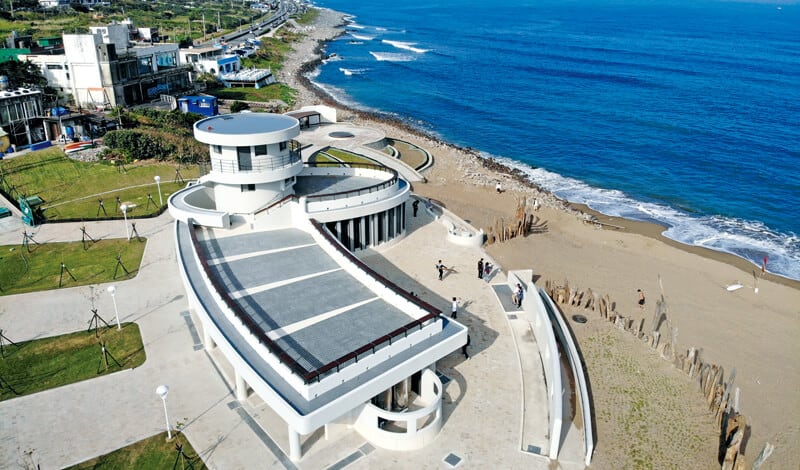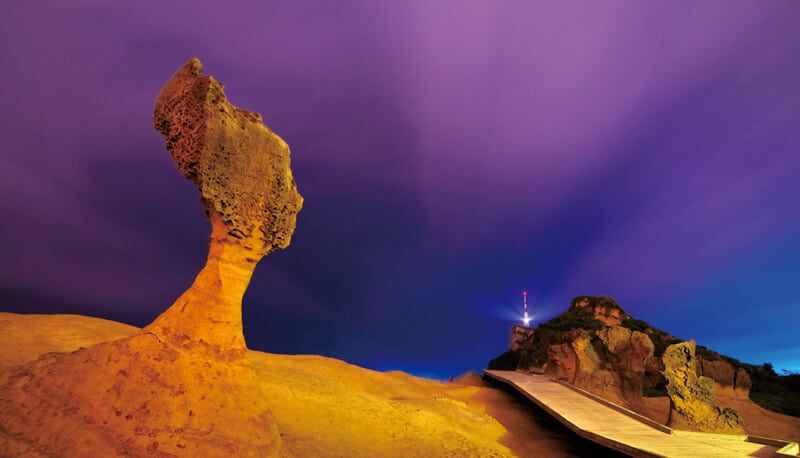The Tourism Bureau promoted the Tourism 2020—Taiwan Sustainable Tourism Development Plan in response to the trends of globalization, digitalization, and localization, as well as significant changes in Taiwan's visitor source markets, intense regional tourism competition and other challenges. The plan outlines five strategies to solidify the foundation for domestic travel and develop international markets: "development of diversified markets, promotion of domestic travel, guidance for industrial transition, development of smart tourism, and expansion of experiential tourism." In 2019, Taiwan received more than 11.86 million visitors.
 Market expansion/diversification efforts and increased international tourism cooperation:
Market expansion/diversification efforts and increased international tourism cooperation:
- The Tourism Bureau arranged precision marketing targeting ten key countries. It also continued to communicate with the Ministry of Foreign Affairs on relaxing visa requirements and the Project for Simplifying Visa Regulations for High-end Group Tourists. In addition, the bureau expanded its service scope with the opening of service offices in London (UK), Mumbai (India), Moscow (Russia), Jakarta (Indonesia), Auckland (New Zealand), Sydney (Australia), and Vancouver (Canada).
- Muslim-Oriented Seminars were held in Taipei, Miaoli, and Chiayi to further develop Muslim markets and promote a Muslim-friendly travel service environment. As of the end of 2019, a total of 252 restaurants and hotels had obtained Halal certification.
- The Directions for the Tourism Bureau, MOTC's Incentives for the Promotion of Visits to Taiwan by Overseas Cruise Ships and Directions for Fly-Cruise Incentives from the Taiwan Tourism Bureau were amended to encourage cruise companies to add Taiwan stops on their Asian routes. In 2019, the number of foreign cruise passenger arrivals reached 158,843, up 10% from 2018. During the same period, the number of fly-cruise visitors rose 25% to 17,440.
- The Tourism Bureau held the 12th Taiwan-Japan Tourism Summit Forum, 34th Taiwan-Korea Tourism Exchange Conference, Eighth Taiwan-Vietnam Tourism Cooperation Conference, and Taiwan-Paraguay Tourism Exchange and Cooperation Conference to promote international cooperation. It also signed the Taiwan-Belize Tourism Exchange Letter of Intent and Memorandum on Taiwan-Japan Railway Tourism Cooperation to expand international tourism cooperation and partnerships.
 Invigorating Domestic Travel, Developing Diverse Tourism Products:
Invigorating Domestic Travel, Developing Diverse Tourism Products:
- The National Travel Card system was extended by approval of the Executive Yuan. Tourism-related consumption under the system totaled NT$4.43 billion.
- Advantageous local resources were integrated with the 101 international and national tourism activities selected from the 2020-2021 Taiwan Tourism Biannual Calendar. These resources were combined with city marketing to develop the domestic travel market and promote overnight, cross-region travel.
- The Tourism Bureau introduced electronic stored value cards with half-price fares for Taiwan Tourist Shuttle service to scenic sites. Guidance was provided to 21 travel agencies in planning 83 half-day, one-day, and multi-day Taiwan Tour Bus tour packages for FIT travelers. The bureau also teamed up with the Taiwan Railway Administration to introduce a Taiwan Tour Bus Train-Bus Travel Passport and encourage use of public transportation.
- Promoted Experiential Tourism: Brightening up the Village demonstration project to develop local features and promote in-depth package tours. The project attracted 5,382 participants and generated NT$8.09 million in tourism revenue.
- Created senior-friendly, barrier-free environments. A total of 159 accessible (barrier-free) visitor sites were established by 2019.
- The Tourism Bureau promoted the Year of Small Town Tourism. It partnered with local governments and the Council for Hakka Affairs to inventory food, lodging, recreation, shopping, and travel related resources of various agencies for 40 towns to improve visitor environments and services, in-depth experiences, and marketing and promotions. In 2019, the 13 administrations under the Tourism Bureau held 69 activities joined by 452,000 participants and promoted 78 small town tours joined by about 85,000 visitors.
- Continued to promote sustainable tourism and participate in international awards. Taiwan won the Pacific Asia Travel Association (PATA) Gold Award in 2019.
- Established the Council for the Promotion of Tourism in Indigenous Areas, Tourism Bureau, MOTC, held the Indigenous Tourism Carnival, and actively promoted indigenous tours to spur development of indigenous tourism.
 Creating Tourism Sites with International Appeal and Enhancing Scenic Site Service Capacity:
Creating Tourism Sites with International Appeal and Enhancing Scenic Site Service Capacity:
- The Tourism Bureau continued to promote the Medium-term Construction Plan for Major Tourist Sites. It renovated facilities at sites and constructed visitor center service facilities around the 13 national scenic area administrations.
- The Tourism Bureau guided local governments in creating international spotlight attractions. Six Cross-area Spotlight Projects were completed, including the Shihmen Reservoir and Dahan River Basin Cross-Area Highlight Project in Taoyuan City; Hsinchu Park Regeneration Cross-Area Highlight Project for the Regeneration in Hsinchu City; World Heritage Charm, ‧ International Slow City Old Mountain Line Spotlight Project in Miaoli County; Clear Water Forest ‧ Happy South East Cape Project in Changhua County; Three Forest Wandering Project in Yunlin County; and Taiping Suspension Bridge, Tea Ceremony, and Meishan Inn Project in Chiayi County. Local tourism sites were improved to create high-quality tourism environments and facilities and enhance the quality of domestic tourism and recreation services.
- The Tourism Bureau assisted local governments through 80 key investment and environmental transformation projects. This helped improve the quality of tourism services at major scenic areas, tourism sites, and tourism belts.
- The central and local governments jointly constructed and inaugurated the Zhongjiao Bay International Surfing Center to spur a sports and tourism wave on the North Coast and create new momentum and opportunities for local transformation and development.
 Developing smart tourism and optimizing the tourism service experience:
Developing smart tourism and optimizing the tourism service experience:
- The Tourism Bureau established the Taiwan Tourism Information Website with multiple language versions to facilitate in-depth independent travel in Taiwan. Virtual reality (VR) images for 100 scenic spots or events were shot. The images were edited and used in the production of seven VR films.
- Government open data, domestic and foreign sci-tech innovations, and tourism resources combined at the Tourism Innovation and Tech Awards. This year's event attracted 140 entries from 12 countries. The competition highlighted the innovation and creativity of Taiwan's technology and tourism. The event helps Taiwan to diversify tourism services and create more travel and tourism opportunities.
- The Tourism Bureau planned a big data platform and established related systems for tourism. The platform enables analysis of tourism data to identify information to assist policy planning, industrial transformation, precision marketing, and improvement of tourism services.
- The Tourism Bureau improved the Taiwan Tourist Shuttle and Taiwan Tour Bus service quality. It established information stations and guided administrations in promoting mobile tourist information. It continued to expand service points and take initiative to increase the density and depth of the i-center tourism service system. As of 2019, there were 601 Information Stations.
- The Tourism Bureau continued cross-platform integration of Fun Pass e-tickets in Kaohsiung City, Pingtung County, Penghu County, Yilan, central Taiwan, Taitung, Tainan and Taipei. Fun Pass transactions numbered 170,181 in 2019.
 Guiding the Industry’s Transformation and Building High-quality Industry Brands:
Guiding the Industry’s Transformation and Building High-quality Industry Brands:
(一)Travel Agencies:
- The Directions Governing Awards and Subsidies of Tourism Bureau, MOTC for Guiding Travel Agencies to Establish Specialty Product Brands were amended and promulgated. Travel agencies received NT$10.7 million in subsidies for tourism marketing and promotion and to incentivize senior and barrier-free travel.
- The Tourism Bureau continued to help the travel agencies transform and upgrade operations and actively develop new visitor source markets. In line with the theme of 2020 Year of Mountain Tourism, the bureau helped travel agencies to design and package mountain tours and build professional knowledge related to mountain tourism. It arranged two matchmaking meetings and two indoor and outdoor education and training courses, attracting 415 participants from 138 travel agencies.
- The Tourism Bureau maintained business order, strengthened inspections, and assisted promotion of community experience tours. It also began regulatory adjustments and provided guidance to match travel agencies and community associations for cooperation.
- The Tourism Bureau supported training for guides and key personnel speaking Southeast Asian languages. It arranged training for "rare language travel support staff" and encouraged trainees to participate in guide licensing and review classes that were joined by 49 participants. It also provided guidance on participating in foreign-language tour guide exams. To enhance the quality of human resources, the bureau arranged senior executive development classes joined by 79 participants and mid-level supervisor training for 754 participants. A total of 245 tourism companies and tertiary institutions provided more than 10,000 learning hours, 88 teaching materials, and three new lesson plans for key personnel.
(二)Hotels:
- The Tourism Bureau continued to promote the Star Hotel and Taiwan Hosts brand certification systems. As of 2019, there were 446 star-rated hotels and 1,064 Taiwan Host homestay businesses. Awareness of hotel brands among internet users was heightened with the Star Hotel Heart Travel and Taiwan Hosts 1000+ activities.
- The Tourism Bureau strengthened training for mid-level managers in the hotel industry to improve the hotel service quality and competitiveness. Eight training courses were held for 422 people in northern, central, southern, and eastern Taiwan.
- As of 2019, the Tourism Bureau has assisted the tourism industry in securing 252 preferential loans totaling NT$10,884,360,000 and 12 interest subsidies totaling NT$306.73 million.
(三)Amusement Parks:
- The Tourism Bureau supported the tourism and recreation industry in all-age friendly development, smart park and cross-domain integrated development, development of diversified markets, improvement of barrier-free facilities, gendered facilities, and tourism environments for special groups and seniors to meet the needs of visitors of all ages. It also encouraged customized services through smartphones and apps, as well as cooperation with peripheral industries and cross-industry integration to increase the length of stay, secondary consumption, and rate of repeat visits.
 Strengthening Travel Safety Management to Protect Visitor Rights
Strengthening Travel Safety Management to Protect Visitor Rights
- The Tourism Bureau commissioned the Travel Agent Association of R.O.C., Taiwan to carry out a One-day Domestic Tour On-site Inspection and Recording. It strengthened joint inspections of tour buses during long weekends, Travel Safety Awareness Week, and specific campaigns, as well as stepped up travel safety management. In 2019, 1,733 groups were inspected.
- The Tourism Bureau formulated subsidies for local governments to implement the Working Guidelines for Management of Illegal Hotels. It also continued to supervise hotel inspections by local governments. In 2019, inspections were conducted at 8,930 hotels. Article 55 and Article 55-1 of the Statute for the Development of Tourism were amended to increase fines and regulate booking platform management to protect visitors' hotel accommodation rights and strengthen management of illegal hotels.
- The Tourism Bureau implemented a three-tier management mechanism according to the Key Points on Supervision and Assessment of Operation Management and Safety Maintenance of Tourist Amusement Park Enterprises to strengthen travel safety and create a high-quality amusement park environment.
 Helping the Tourism Industry Adapt to Changes in the Mainland Visitor Market
Helping the Tourism Industry Adapt to Changes in the Mainland Visitor Market
- The Domestic Winter Travel Expansion project was carried out to incentivize travel agencies to develop tour packages for domestic visitor groups. A total of 563 travel agencies applied for travel subsidies for 2,114 tour groups with 80,634 members. More than NT$67.5 million in subsidies was awarded. Incentives were also offered for individual traveler accommodations. About 6,000 licensed hotel operators (about 740,000 rooms) in 22 counties and cities received subsidies totaling about NT$1 billion. The subsidies enabled discounts to approximately 1.74 million local guests and created tourism benefits of more than NT$6.8 billion.
- The Tourism Bureau promoted the Spring Outing Project to encourage domestic travel and local experiences. County and city governments proposed tourism programs suited to local resources, industries, and tourism development needs. NT$410 million was invested in incentives for travel by more than 1.05 million people, generating over NT$3.7 billion in tourism benefits. More than 6,600 licensed hotels participated in incentives for FIT traveler accommodations. FIT travelers from various counties and cities applied for about NT$230 million in hotel subsidies. The subsidies were used for approximately 460,000 rooms and about one million guests.
- Incentives were provided to encourage domestic travel during the off-peak fall and winter seasons. As of January 31, 2020, 1,561 travel agencies had applied for NT$1,198,973,308 in subsidies for 21,785 tour groups with 787,874 members. More than 7,900 hotels applied for subsidies for FIT travelers. A record high 60% of all licensed hotels applied for the subsidies. FIT travelers from various counties and cities applied for subsidies totaling NT$3.01 billion. The subsidies were used for stays by about 6,081,000 guests at about 2,747,000 rooms.










